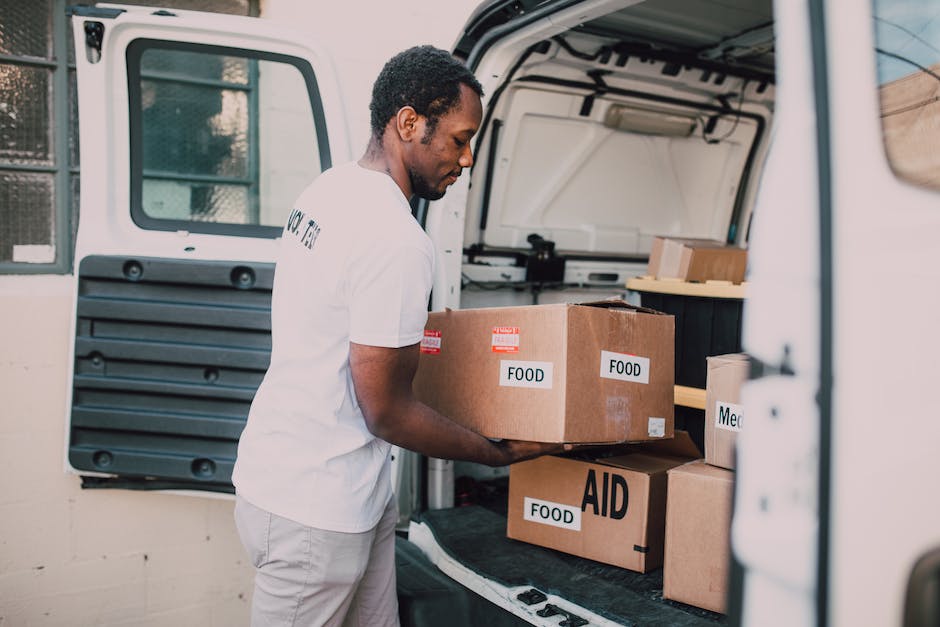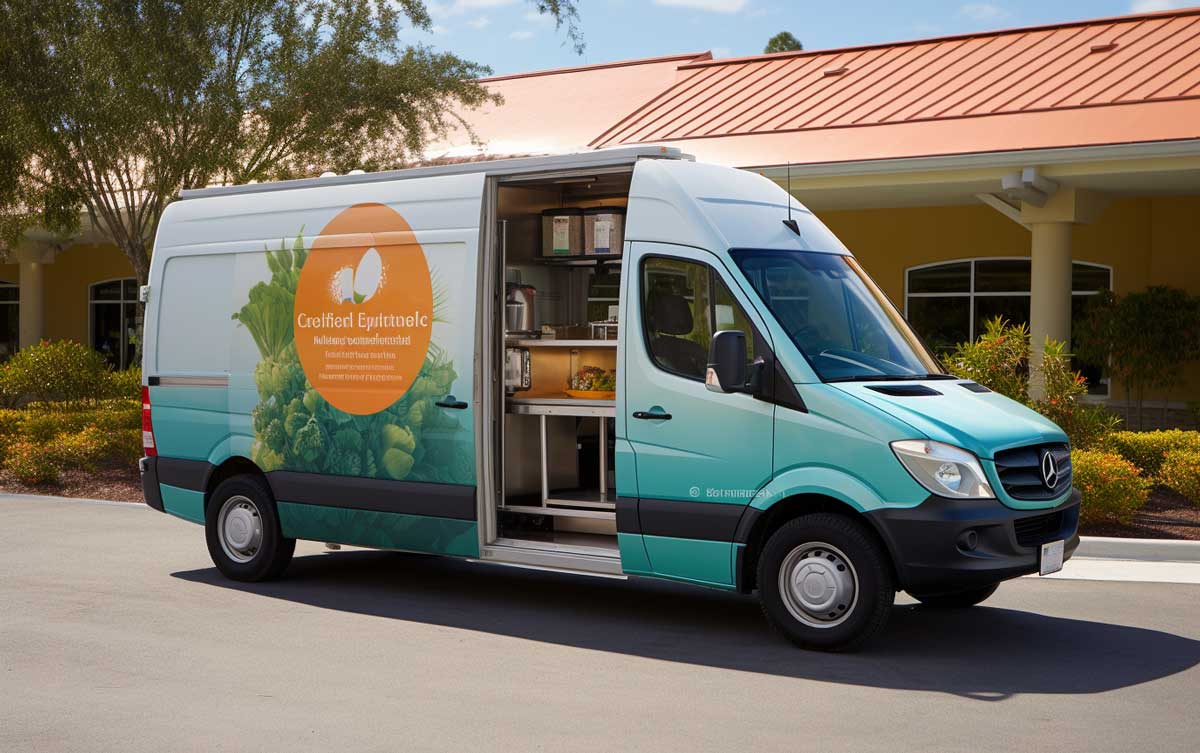Food pantries play a crucial role in communities across the United States, providing essential food items to individuals and families in need. If you or someone you know is facing food insecurity, understanding how to access and utilize a food pantry can be a lifesaver.
In this article, we'll delve into what a food pantry is, who uses it, how to get food from a food pantry, and the benefits of turning to one during times of need.
What Is A Food Pantry?
A food pantry is a distribution center where individuals and families can receive food, especially when they're unable to purchase it due to financial constraints. These pantries are often supplied with food from larger organizations, such as food banks, and serve as a direct line to those in need within a community. Unlike food banks, which typically serve as storage and distribution hubs for multiple pantries, a food pantry provides food directly to end consumers.
Who Uses Food Pantries?
Food pantries cater to a diverse range of individuals and families. Contrary to some misconceptions, those who utilize food pantries come from various backgrounds and circumstances:
-
Economic Challenges: Many families and individuals turn to food pantries during times of economic hardship, such as job loss or unexpected expenses.
-
Children And Seniors: A significant number of children and seniors rely on food pantries. Over 12 million children and 7 million seniors in the U.S. depend on these services to meet their nutritional needs.
-
Educational And Marital Status: More than half of food pantry users are women, and a majority are single. Many have lower educational attainment.
-
Adverse Life Events: Unexpected life events, such as medical emergencies or natural disasters, can lead to financial strain, prompting individuals to seek assistance from food pantries.
It's essential to understand that food insecurity can affect anyone, regardless of their background or circumstances. Food pantries exist to provide support and relief to those in need without judgment.
Benefits Of Using A Food Pantry
Utilizing a food pantry offers several benefits:
-
Access To Nutritious Food: Food pantries often provide a variety of healthy and nutritious food options, ensuring that individuals and families receive a balanced diet.
-
Community Support: Beyond food, many pantries offer additional resources, such as nutrition education, health screenings, and even seasonal assistance like back-to-school supplies.
-
Environmental Benefits: Some pantries, especially those operating on a market-style model, help reduce food waste by redistributing food that might otherwise be discarded.
-
Economic Relief: For families and individuals facing financial challenges, accessing food from a pantry can alleviate some of the economic burdens, allowing them to allocate resources to other essential needs.
Finding A Local Food Pantry
In times of need, local food pantries can be a lifeline, providing essential food items to individuals and families facing food insecurity. If you're wondering how to locate a food pantry in your area, there are several effective methods to consider.
Searching Online For A Local Food Pantry
-
Dedicated Websites: Websites such as Feeding America and FoodPantries.org offer directories that list food pantries by location. Simply input your zip code or city, and these sites will provide you with a list of nearby food pantries, their addresses, and contact information.
-
Search Engines: A straightforward Google search can also yield results. Typing "food pantry near [your zip code]" into the search bar will often display a list of local food pantries, along with their operating hours and any specific requirements they might have.
-
Community Websites: Many community websites or local online forums will have resources or threads dedicated to local assistance programs, including food pantries.
Contacting Local Government Or Nonprofits For Food Assistance
-
Government Assistance: The U.S. government offers various food assistance programs. Websites likeUSAGov provide information on how to get immediate food assistance from both government and private organizations. Additionally, the USDA'sEmergency Food Assistance Program (TEFAP) is a federal initiative that supplements the diets of low-income individuals by providing them with emergency food and nutrition assistance.
-
Dial 211: In many areas, dialing 211 will connect you to a helpline that can provide information on local food pantries, soup kitchens, and other food assistance programs.
-
Local Nonprofits: Many nonprofit organizations, especially those focused on community welfare and support, will have information on local food pantries and other resources. Organizations like the United Way often have directories of local food assistance programs.
-
Community Centers And Religious Institutions: Local community centers, churches, mosques, synagogues, and other religious institutions often operate food pantries or can direct you to nearby resources.
Requirements To Receive Assistance From A Food Pantry
Food pantries play an essential role in providing food assistance to those in need. However, to ensure that the resources are distributed fairly and reach the intended recipients, many food pantries have set specific requirements. Understanding these requirements can help individuals and families access the assistance they need without any hitches.
Documentation Needed To Access Assistance
-
Proof Of Income: Most food pantries require proof of income to determine eligibility. This can be in the form of a tax return, pay stub, or other official documents that show your earnings.
-
Identification: A valid photo ID, such as a driver's license or state ID, is often required. Some pantries may also ask for identification for all household members, especially if food allocation is based on household size.
-
Proof Of Residency: To ensure that resources are distributed to local residents, some food pantries may require proof of residency, like a utility bill or rental agreement, indicating your current address.
-
Special Circumstances: In certain situations, such as natural disasters or other emergencies, additional documentation might be required or some requirements might be waived to expedite assistance.
Eligibility Requirements By Location/State/County/City
Eligibility criteria can vary widely based on the location of the food pantry and the specific regulations set by local governments or overseeing organizations:
-
Income Thresholds: Many food pantries use income thresholds based on the Federal Poverty Line (FPL). For instance, in Centre County, Pennsylvania, services are available to those whose gross income does not exceed 185% of the FPL.
-
Geographical Restrictions: Some food pantries serve only residents of specific areas, cities, or neighborhoods. For example, certain pantries might only cater to residents of a particular side of a city.
-
State And Federal Programs: Programs like the USDA's Emergency Food Assistance Program (TEFAP) have their own set of eligibility criteria, which can include both income-based and non-income-based requirements.
-
Frequency Of Use: Some food pantries limit the frequency with which an individual or family can receive assistance, such as once a month, to ensure that resources are available to as many people as possible.
It's essential to note that while these are common requirements, each food pantry may have its own specific criteria. Therefore, it's always a good idea to contact the food pantry directly or check their website for the most accurate and up-to-date information.
Types Of Foods Available At A Food Pantry
Food pantries play a pivotal role in ensuring that individuals and families facing food insecurity have access to nutritious meals. The variety of items available can vary based on donations, partnerships, and the pantry's resources. Here's a breakdown of the types of foods and other essential items you might find at a food pantry:
Fresh Fruits & Vegetables
Many food pantries prioritize offering fresh produce to ensure recipients have access to nutritious options. This can include:
-
Seasonal Fruits: Such as apples, oranges, bananas, and berries.
-
Vegetables: Including carrots, broccoli, lettuce, and tomatoes.
-
Herbs: Such as basil, cilantro, and parsley.
-
Root Vegetables: Potatoes, onions, and garlic are staples that can be stored for longer periods.
Non-Perishable Items & Canned Goods
These are the backbone of most food pantries due to their long shelf life:
-
Canned Vegetables & Fruits: Such as green beans, corn, peaches, and pineapples.
-
Canned Proteins: Including tuna, salmon, chicken, and beans.
-
Pasta & Rice: Essential staples that can be used in a variety of meals.
-
Cereal & Oatmeal: Breakfast options that provide essential nutrients.
Meals & Ready-to-Eat Foods
For those without regular access to cooking facilities, ready-to-eat options are crucial:
-
Canned Soups & Stews: These can be heated and consumed directly from the can.
-
Microwaveable Meals: Such as pasta dishes or rice bowls.
-
Snack Items: Granola bars, trail mix, and other portable snacks.
Baby Care Products & Formula
For families with infants, certain essentials are critical:
-
Baby Formula: Different types, including milk-based, soy-based, and specialized formulas for infants with specific dietary needs.
-
Baby Food: Pureed fruits, vegetables, and meats suitable for infants.
-
Diapers & Wipes: Essential for infant care and hygiene.
Pet Food Supplies
Recognizing that pets are also part of the family, some food pantries offer:
-
Dry & Wet Pet Food: For both cats and dogs, ensuring they receive balanced nutrition.
-
Treats: Occasional treats for pets.
-
Other Supplies: Such as cat litter or toys, depending on donations and availability.
Frequently Asked Questions
To help you better understand how to get food from a food pantry, we've answered some of the most frequently asked questions.
How do I find a food pantry near me?
You can search online through dedicated websites like Feeding America, use search engines with keywords like "food pantry near me," or contact local government and nonprofit organizations for guidance.
Are there any income requirements to access food from a pantry?
Yes, many food pantries have income requirements to ensure assistance goes to those most in need. However, the specific threshold can vary by location and organization.
Can I access a food pantry even if I don't have all the required documentation?
It's best to contact the food pantry directly. Some may offer provisional assistance or guide you on how to obtain the necessary documentation.
Do food pantries only offer food?
While food is the primary offering, many pantries also provide baby care products, pet food supplies, and sometimes even personal care items.
Can I donate to a food pantry?
Absolutely! Food pantries rely on donations to operate. It's best to check with your local pantry regarding their current needs and donation guidelines.
Are the foods offered at food pantries safe and nutritious?
Yes, food pantries prioritize the safety and nutrition of the foods they distribute. They often collaborate with larger organizations to ensure the food is of good quality.
Know How To Get Food From A Food Pantry
In today's challenging times, food pantries stand as beacons of hope for many individuals and families. They not only provide essential food items but also foster a sense of community and support. Whether you're seeking assistance or looking to contribute, understanding how to get food from a food pantry can make a significant difference. Remember, no one should have to face food insecurity alone, and with the collective efforts of communities and organizations, we can ensure everyone has access to nutritious meals.
Discover food assistance programs by reading our comprehensive guide on finding local drive-thru free food distribution centers near you. Visit Gov Relations to find more information and browse through the available resources.







